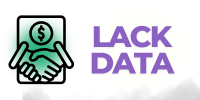Choosing the right photo editing service can be daunting, especially with the multitude of packages and pricing models available in the market. Whether you’re a professional photographer, an e-commerce business, or a marketing agency, selecting the best package that meets your quality expectations, budget, and turnaround requirements is crucial. This guide will help you navigate the factors to consider and how to effectively compare photo editing packages and prices.
Understand Your Editing Needs First
Before diving into pricing comparisons, clearly define your photo editing requirements. Are you looking for basic color correction and photo editing services cropping, or more complex retouching, background removal, and manipulation? The scope of your editing needs will heavily influence the package you should consider. For instance:
Basic Packages: Typically include color correction, exposure adjustments, cropping, and minor retouching.
Advanced Packages: Might offer complex manipulations, multi-layer edits, object removal, background replacement, or creative effects.
Specialized Packages: Tailored for specific industries such as fashion, jewelry, real estate, or automotive photography.
Knowing what you need helps you avoid overpaying for unnecessary services or settling for insufficient editing.
Compare Pricing Models
Photo editing services offer various pricing structures, including:
Per Image Pricing: You pay for each image edited, which is ideal if you have a small batch or irregular editing needs.
Monthly Subscription: Suitable for are we using welcome sequences for new users? businesses with a steady volume of images, offering a fixed number of edits per month at a discounted rate.
Package Deals: Bundled sets of images at a fixed price, often offering cost savings for medium to large projects.
Custom Quotes: Tailored pricing based on specific requirements, useful for highly specialized or large-volume editing.
When comparing prices, be sure to check what each package covers. A lower per-image rate might exclude services like detailed retouching or require extra fees for revisions.
Evaluate the Quality of Work
Price alone should never be the sole numbers lists deciding factor. Review portfolios and sample edits provided by the service providers to assess their quality. Look for:
Attention to Detail: Are edits clean, natural, and consistent?
Range of Styles: Does the editor’s style align with your brand or vision?
Before and After Samples: This shows the level of enhancement and retouching skill.
Client Testimonials: Feedback on quality, professionalism, and communication.
A package that’s cheaper but delivers subpar quality may cost you more in the long run due to re-edits or lost clients.
Check Turnaround Time and Revision Policies
Quick turnaround can be critical for projects with tight deadlines. Compare the estimated delivery times offered in the packages. Some services offer express editing at a premium, while others have longer standard timelines.
Additionally, understand revision policies. How many rounds of revisions are included? Are additional edits charged extra? Transparent policies here can save frustration and unexpected costs.
Assess Customer Support and Communication
Reliable customer support is key to smooth collaboration. Consider:
Communication Channels: Is support available via chat, email, or phone?
Responsiveness: Quick replies can be crucial when you need urgent changes.
Project Management Tools: Some services provide dashboards for easy order tracking and feedback.
Packages that include dedicated account managers or personalized support often provide a better experience, especially for ongoing projects.
